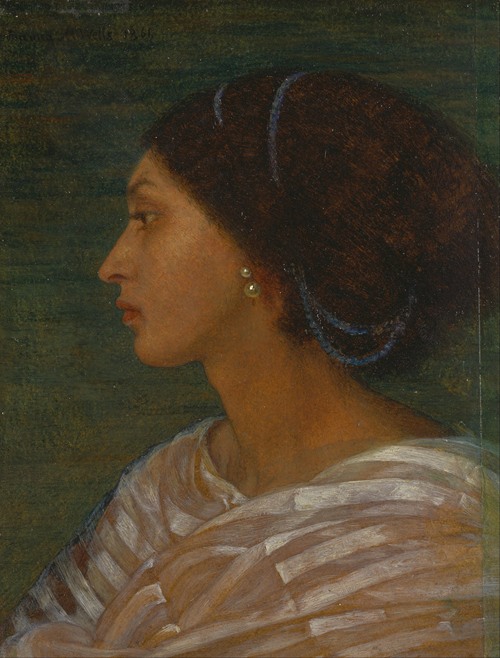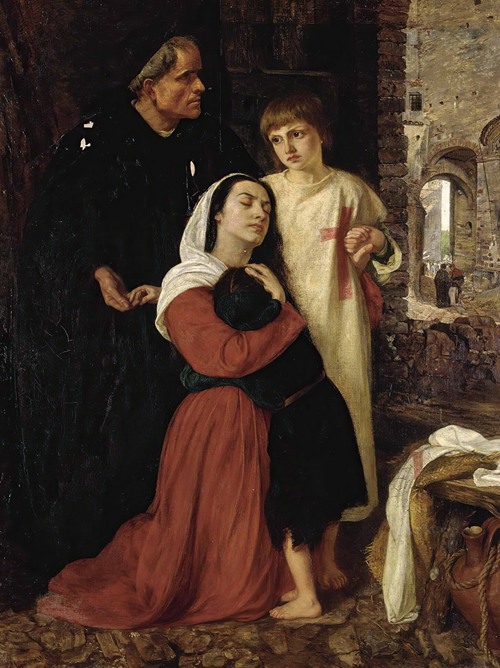
Joanna Mary Wells
Joanna Mary Boyce was a British painter associated with the Pre-Raphaelite Brotherhood. She is also known by her married name as Mrs. H.T. Wells, or as Joanna Mary Wells. She produced multiple works with historical themes, as well as portraits and sketches, and authored art criticism responding to her contemporaries. She was the sister of Pre-Raphaelite watercolourist George Price Boyce.
Joanna Mary Boyce, born in Maida Hill, London was the daughter of George Boyce, a former wine-merchant who had found prosperity as a pawnbroker, and his wife Anne.
Support from her father and her older brother George Price Boyce helped Joanna Mary Boyce achieve an early and rigorous education in the visual arts. She began a formal study of drawing by the age of eleven with Charles John Mayle Whichelo, and filled multiple sketchbooks as a young teenager. At the age of eighteen she entered Cary's art academy, and afterwards worked under James Mathews Leigh, at his school in Newman Street, London. In 1855, she took an extended trip to Paris, where she studied in Thomas Couture's atelier.
Boyce first exhibited her artwork publicly in 1855 at the Royal Academy. Though Boyce exhibited two pieces, it was her painting Elgiva that won Boyce the admiration of such critics as John Ruskin and Ford Madox Brown. In it, Boyce depicted model Lizzie Ridley as a tragic heroine from Anglo-Saxon historical legend, possibly following the precedent of Pre-Raphaelite painter John Everett Millais who had depicted Elgiva eight years prior.
Following her first exhibition, Boyce continued to pursue artistic excellence through extensive sketching and international art-viewing expeditions. She spent 1857 in Italy, and in December of that year married miniaturist Henry Tanworth Wells (later a Royal Academician) in Rome. Boyce used her time in Italy to work on paintings such as The Boys' Crusade and La Veneziana, a portrait of a Venetian lady. In addition to her own artistic practice at this time, Boyce also continued a lifelong practice of seeking out and analyzing the artwork of her contemporaries. Boyce published some of this analysis as art criticism in the Saturday Review, wherein she lauded the "sincerity" and principles of the Pre-Raphaelite art movement, and noted the positive influence of John Ruskin on the English art world.
Boyce's later works include Head of a Mulatto Woman, a portrait of Jamaican immigrant and popular artists' model Fanny Eaton.
Boyce died on 15 July 1861, after the birth of her third child. Her last completed painting, A Bird of God, was left on her easel.

